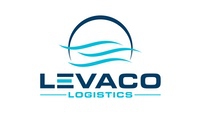The regulation establishing a carbon border adjustment mechanism (CBAM) of May 10, 2023 is one of the cornerstones of the European Union’s Fit for 55 package.
With CBAM, Europe aims to build a sustainable economy. Today, European companies must adhere to strict rules on CO2 emissions while third countries do not. In order to stimulate fair competition, this carbon tax is used in the form of CBAM. In this way, one wishes to make production of carbon-intensive products in third countries less attractive.
Which sectors?
CBAM covers the following sectors:
- Cement
- Aluminium
- Fertilizers
- Electricity
- Iron and Steel
Which goods ?
The complete list of goods to which CBAM applies can be found here.
What reporting?
During the transition period (1/10/2023- 31/12/2025) emissions will have to be reported. This reporting will have to be submitted to the European Commission on a quarterly basis through their online portal ( CBAM transitional Registry). The first quarterly report must be submitted by January 31, 2024. More information on how to report can be found in the Annex I of Implementing Regulation (EU) 2023/1773 as well as in DG Taxud’s guidance documents.
Dg taxud guidance documents (EU-Importers)
Dg taxud guidance documents (Non-EU installations)
Implementing Regulation
The Implementing Regulation on reporting requirements and methodology provides for flexibility when it comes to the values used to calculate embedded emissions on imports during the transitional phase. Until the end of 2024, companies will have the choice of reporting in three ways:
1. Full reporting according to the new methodology (EU method)
2. Reporting based on an equivalent method (three options)
3. Reporting based on default reference values (only until July 2024, i.e for Q4 of 2023 and Q1&Q2 of 2024)
More information can be found here.
Click here for the SBAM communications template.
Click here for the information to be submitted.
Who should report?
Reporting during the transition period will need to be submitted by the CBAM Reporting declarant.
The CBAM reporting declarant is:
- If the importer is located in the EU
- the importer or
- the indirect representative (subject to approval)
If you are the importer based in the EU, we assume that you will take on the CBAM reporting. If you do not wish to carry out this reporting you must explicitly inform your indirect customs representative. The latter has the right to refuse the CBAM reporting.
If you use a direct customs representative, you will at all times be responsible for the CBAM reporting obligations yourself.
If the importer is located outside the EU
- The indirect representative
As of 1/1/2026, the CBAM reporting declarant must actually be registered as an authorized CBAM declarant. Customs will then check whether the importer and/or CBAM declarant is registered. If this is not the case, the goods may not be imported.
In all cases where you wish to appeal to your customs representative for CBAM, the latter will ask you to sign a CBAM declaration.
We hope to have informed you sufficiently.

